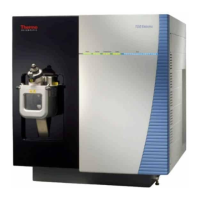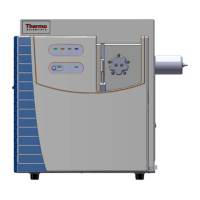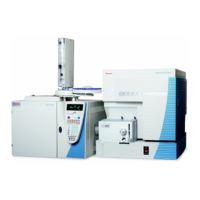1
Introduction
Scan Modes
8 TSQ Series Hardware Manual Thermo Scientific
Note that a neutral gain (or association) experiment can also be performed in which the mass
range scanned by Q3 is offset by a selected mass above the mass range scanned by Q1.
For a neutral loss (or neutral gain) mass spectrum, as for a parent mass spectrum, Q1 (the
parent ion) provides data for the mass-to-charge ratio axis, whereas Q3 (the product ion being
monitored) provides data for the ion intensity axis.
Experiments that use the neutral loss scan mode (neutral loss experiments) are useful when a
large number of compounds are being surveyed for common functionality. Neutral moieties
are frequently lost from substituent functional groups (for example, CO
2
from carboxylic
acids, CO from aldehydes, HX from halides, and H
2
O from alcohols).
Figure 3. Illustration of the neutral loss scan mode
Q2
RF Only + Ar
Q1 Scanning Q3 = Q1 -
Q1 m/z

